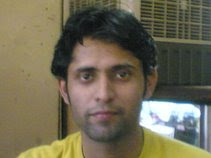PUSHKARNA OR PUSHTIKAR BRAHMANS
Kindly include the following authentic note on Pushkarna Brahmans in your website on Brahmans.
Professor Shyamdas Joshi
prof_shymajoshi@hotmail.com
prof_shymajoshi@yahoo.com
1. The origin:
Brahmans the first and foremost caste of Hindu Society and its Caste System is the most talented intellectual class. They were known as Maharishies in the ancient times, who led a very austric life in the meditation, the dhyan yoga and tapasya. They gave Vedas and Upanishads and other ancient religious or spiritual literature. Brahmans are the descendents of these Maha-rishies, who are their gotras and parvars. The Caste System is oftenly being criticised by some without going deep in its merits and demerits. It is actually based on principle of Division of Labour. Considering the society as a whole just like human body. Brahmans being intellectual class occupy the place of head or brain with their higher intellect, knowledge and understanding. Khatries as arm which is meant for protection of the body. Vaish or Merchant class are just like stomach, which receives food, digests and transforms into blood and circulates it through out the entire body. They are supposed to bring the every day use commodities from their place of origin, where they are produced and supplied to the society with reasonable price including costs and theirs normal profit. The Shudras are not un-touchable, But labourers, a very important class responsible for production in the Country. They are thus compared with legs upon which the entire structure of the society stands. The caste is determined by two factors Birth and Action or Karam after Birth to maintain it. Theory of Karma or Transmigration of Soul clearly shows that caste in which Jiva gets birth is determined by the Prarbadh Karams, which mature at the time of his birth. Jivatma gets birth due to his past good deeds and as a Brahman he still needs much more good deeds or Karmas. Only individual souls with best past record of good karmas can get birth as Brahmans. After birth the second and the most important factor is the action or Karma performed by the individual. By combination of two completes the determination of Varans or caste of individual.
As pointed out in chapter 1, Shlok 8 of Brahman Utpatti Martand, in the beginning all Brahmans were of only one kind. Subsequently, those who resided on the northern side of Vindhyachal Mountain were known as Goads and those residing in the South as Dravidians who were mostly of black colour, but in them too those who were descendents of Maha rishi Vashishtha and other fair colour rishies were of fair colour. Historians in some cases have not done full justice with Dravidians in naming them, as Unaryans. Dravadians were actually most civilized as they were connected with ancient civilization of Mohen Jo Daro and Indus Valley civilization. Thereafter five classes of each goad and dravads came into being, to name as
1. Sarswat
2. Kanyakubja
3. Goad
4. Utakal
5. Maithali
from goads and
1. Karnataka
2. Tailang
3. Dravid
4. Maharashtra
5. Gurjars
from dravads. From these 10 kinds of both Goad and dravads so many classes of Brahmans emerged. Some say the 84 classes, while others say that number was still more. Some even claim that 84 classes pertain to only Gurjar Brahmans of Dravads, But classification shows that it includes Darvads as well as Goads also. Pushkarna Brahmans were originally Sindh or Sindhwarni Brahmans included in the S.No.5 Gurjar of Dravads. These Sindh or Sindhwarni Brahmans are very old ones and were settled on the banks of Indus river who subsequently earned the blessings of Durga Devi and were named as Pushtikar or Pushkarna Brahmans (Those who strengthen the religion ) on Shranwan Shukla Tryodashi. The day is still being celebrated by Pushkarnas as Pushtikar or Pushkarna day every year. Word Pushkarna emerged from Pishtikar. They were settled in Sindh right from Multan, Bahawalpur upper Sindh Shikarpur , upto Hyderabad, Karachi and Thatta.
2. Classification:
From the main 10 classes of Brahmans more than 108 kinds of Brahmans came into being which are found in various parts of Indian Sub-continent. Let us narrate the names of all such kinds. They are
1. Tolak
2. Oadicha
3. Shrimali
4. Bhagad
5. Sindh or Sindhwarni later known as Pushtikar or Pushkarna
6. Trivedi Mahod
7. Chaturvedi Mahod
8. Mal Mahod
9. Irgyashan Mahod
10. Dhenoja Mahod
11. Khadayate
12. Baj khedwal
13. Bhitar Khedwal
14. Jharola
15. Autar vedi
16. Janbu
17. Bayda
18. Kandol
19. Galav
20. Uneval
21. Girnari
22. Guguli
23. Shree Goad old
24. Shree Goad New
25. Medatwal
26. Odumbar
27. Kapith
28. Vatmool
29. Sragalvat
30. Pal
31. Sotale
32. Shirpatan Motala
33. Karnataka
34. Six kinds of Tailang
35. Niyogi
36. 15 kinds of Darvads
37. Maharashtra
38. Chit pawan Konkunsth
39. Karashtra
40. Trihotra
41. Dasgotra
42. Dvatrishdgram
43. Patityagram
44. Mithunkar
45. Belanjigram
46. Gorashta
47. Keral
48. Tulav
49. Naiburu
50. Haivo
51. yambradri
52. Kaidav
53. Kodhar
54. Shivali
55. Dishaval
56. Bhat Mevadi
57. Trivadi Mevadi
58. Choryi Mevadi
59. Six kinds of Bad Nagar
60. Visnogre
61. Satho Dave
62. Chitode Nagar
63. Bharad Nagar
64. Prashanore Nagar
65. Goad, 12 kinds of Malvi Goad
66. Shri Goad
67. Ganga Putra Goad
68. Haryana Goad
69. Vashishtha Goad
70. Soarabh Goad
71. Dalbhya Goad
72. Mukhesain Goad
73. Bhat Nagar Goad
74. Surya Dhwaj Goad
75. Mathura ke Chaube
76. Valmik Brahman Gujar Samapardayi
77. Rayakval
78. Gomtri
79. Dayma
80. Sarswat
81. Mitra Goad
82. Kapil
83. Talajiye
84. Khetuve
85. Nardi
86. Chandar sar
87. Baladre
88. Gayabal
89. Odye or Utkal
90. Abhir
91. Palivas
92. Letvas
93. Sanodiya
94. Parashar
95. Kanya kubja
96. Sompura
97. Kambodh sidh
98. Nadorya
99. Bharti
100. Pushkar
101. Garudgalya
102. Bhargva
103. Narmodiya
104. Nandvare
105. Maithila
106. Maitrayani
107. Abhil
108. Madhyandinya
Parasher Brahmans are found at Pushkar Lake who are working as Tirath guru at Pushkar Tirath.
